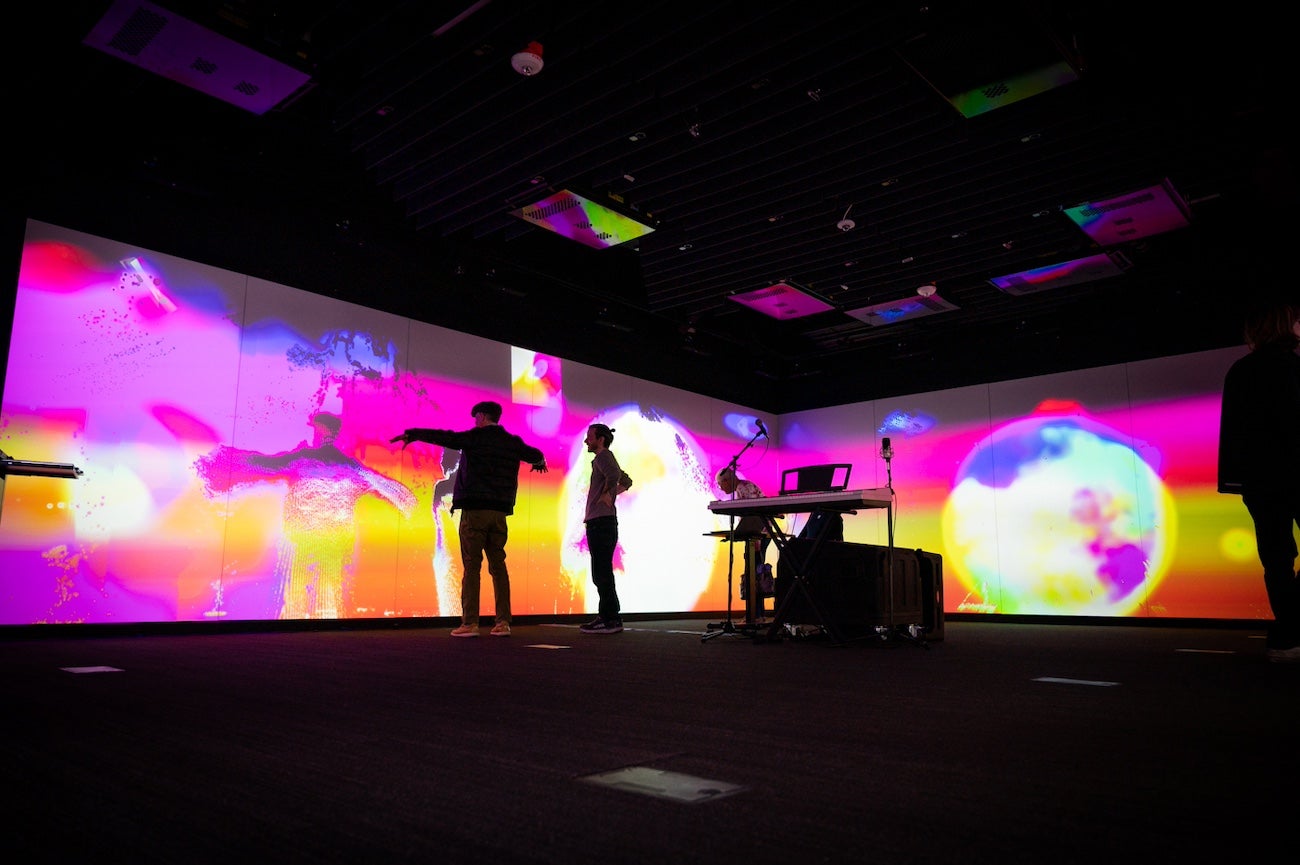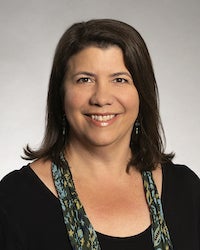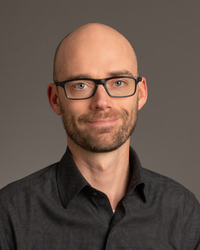
Visitors to the Stein Luminary will learn how this novel space is furthering Boise State community’s exploration of creative arts, cultural sites and scientific phenomena from around the globe. Visitors will discover the breathtaking beauty of protein molecules, and the challenge of enriching language models with ‘meaning.’
Luminary Presenters
-

Lisa Hunt
Interim visiting director of the School of the Arts
Hunt directs the Keith and Catherine Stein Luminary which premiered 22 exhibits in 2023 ranging from art to science, the environment, human rights and more.
Lisa Hunt has twenty years of experience teaching the history of art in higher education, with emphases in Medieval, Renaissance, and Islamic arts and architecture, as well as museum studies. Her current work explores the pedagogical power of immersive, digital, and experiential learning, through mining museum and archival collections and rethinking curatorial narratives for new museum audiences.
“I really think that the interplay between art and science, and the intersection of technology are things that are very interesting to our students, especially as digital natives, who are gaming, TikToking and communicating on Instagram in ways where graphic organization, color and kinetic timing all make a difference,” said Hunt. “These are all artistic skills, so I think it’s very easy for them to see themselves in this space.”
Hunt directs the Keith and Catherine Stein Luminary which premiered 22 exhibits in 2023 ranging from art to science, the environment, human rights and more.
Lisa Hunt has twenty years of experience teaching the history of art in higher education, with emphases in Medieval, Renaissance, and Islamic arts and architecture, as well as museum studies. Her current work explores the pedagogical power of immersive, digital, and experiential learning, through mining museum and archival collections and rethinking curatorial narratives for new museum audiences.
“I really think that the interplay between art and science, and the intersection of technology are things that are very interesting to our students, especially as digital natives, who are gaming, TikToking and communicating on Instagram in ways where graphic organization, color and kinetic timing all make a difference,” said Hunt. “These are all artistic skills, so I think it’s very easy for them to see themselves in this space.”
-

Casey Kennington
Associate professor of computer science
Language is how humans convey meaningful ideas to each other. Where does that meaning come from, and how can we convey that meaning to machines? Large language models like ChatGPT are trained on text, but text alone does not carry semantic meaning.
Kennington and his team’s research aims to enrich language models with embodied (hence the need for emotion, sensorimontor information, and robots), multimodal knowledge that gives words their meaning, enabling language models to be smaller and learn with less data. Our work will enable better language models that work in real-time and will be more accessible because smaller models means less need for expensive computational hardware.
“Large language models trained only on text are missing crucial meaningful information. Robots interacting with humans will help build better models,” said Kennington.
Language is how humans convey meaningful ideas to each other. Where does that meaning come from, and how can we convey that meaning to machines? Large language models like ChatGPT are trained on text, but text alone does not carry semantic meaning.
Kennington and his team’s research aims to enrich language models with embodied (hence the need for emotion, sensorimontor information, and robots), multimodal knowledge that gives words their meaning, enabling language models to be smaller and learn with less data. Our work will enable better language models that work in real-time and will be more accessible because smaller models means less need for expensive computational hardware.
“Large language models trained only on text are missing crucial meaningful information. Robots interacting with humans will help build better models,” said Kennington.
-

Konrad Meister
Assistant professor of chemistry
As a protein biophysical chemist, Meister’s focus lies in unraveling how protein structure dictates function. Modeling and simulating data constitute significant aspects of this endeavor. While these tasks are conventionally carried out on a computer, the unique capabilities of the Stein Luminary allow viewers to immerse ourselves deeply in biomolecular structures, bringing them to life for both research and educational outreach initiatives.
The question Meister is trying to answer is “Why can some proteins act as natural antifreeze agents? And why can some proteins cause diseases when folded in the wrong shape?’
Meister says,“From their beautiful structures to their unique roles as ice sculptors, antifreeze agents, or therapeutics, proteins play a vital and multifaceted role in our daily lives and understanding how they work is key for the health of us and our planet.”
As a protein biophysical chemist, Meister’s focus lies in unraveling how protein structure dictates function. Modeling and simulating data constitute significant aspects of this endeavor. While these tasks are conventionally carried out on a computer, the unique capabilities of the Stein Luminary allow viewers to immerse ourselves deeply in biomolecular structures, bringing them to life for both research and educational outreach initiatives.
The question Meister is trying to answer is “Why can some proteins act as natural antifreeze agents? And why can some proteins cause diseases when folded in the wrong shape?’
Meister says,“From their beautiful structures to their unique roles as ice sculptors, antifreeze agents, or therapeutics, proteins play a vital and multifaceted role in our daily lives and understanding how they work is key for the health of us and our planet.”